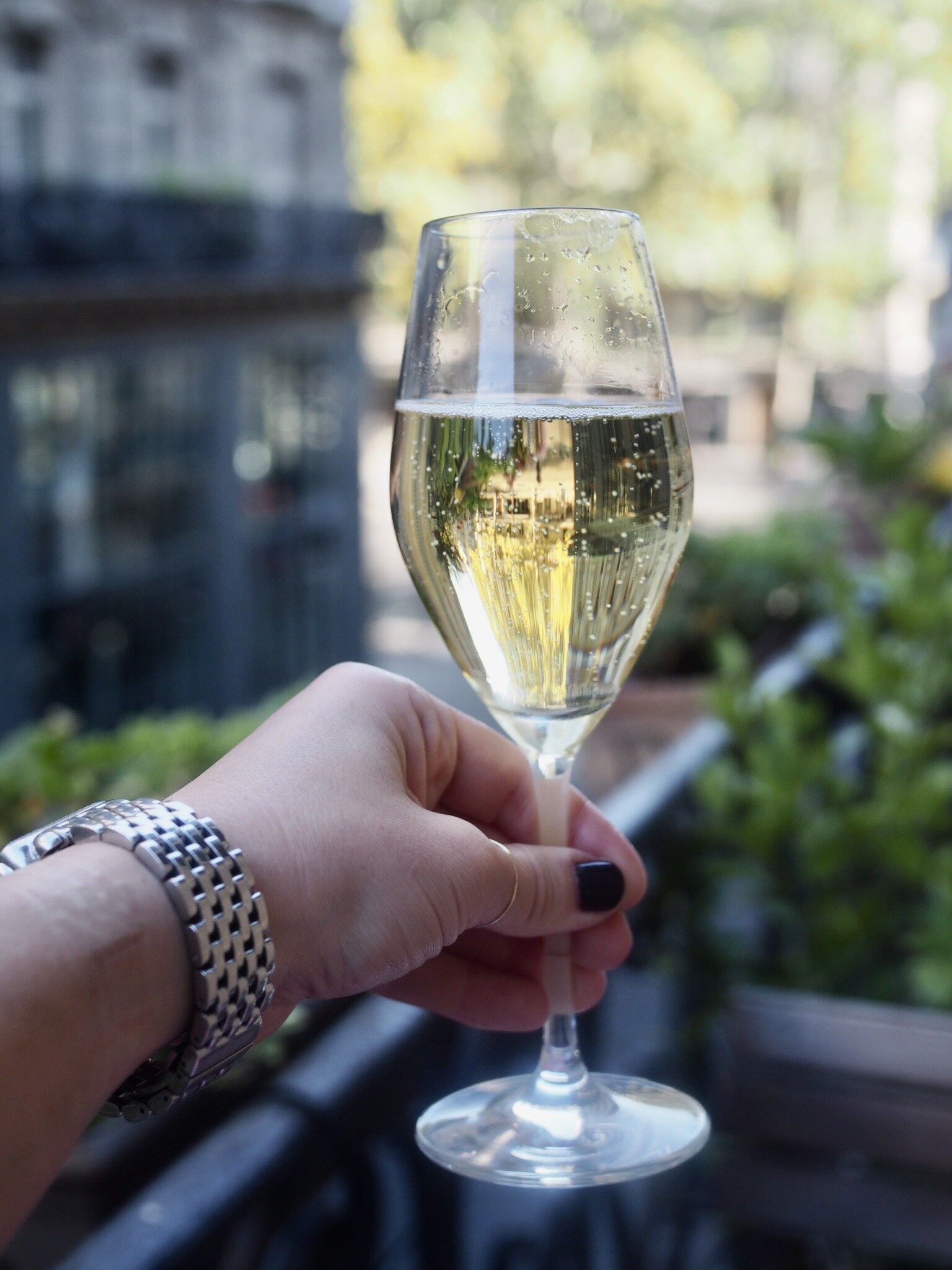
Champagne Etiquette
November 24, 2020
For my beverage of choice, there are a few key points to remember for maximum enjoyment. Read on for my Champagne etiquette tips.
How to Chill
Too warm a bottle (above 57ºF) can create excess foam, which also makes the bottle harder to open. Too cold a temperature (below 42ºF) reduces the bubbles, masks the aromas and even numbs your taste buds. For the ideal serving temperature, remember 47ºF for the perfect taste, bubble structure and aroma. We keep our mini wine fridge set to this temp. Bonus points if your glass is also chilled!
Choosing Glasses
One of my lovely aunts loves Champagne like I do, and she once professed that she would enjoy Champagne out of a thimble if need be (sometimes you just need to get creative when fine stemware is scarce!). But wherever possible, serving Champagne in a flute is the most preferred choice for most bottles. Wine glasses are also an option, especially when you are enjoying a vintage Champagne which is more full-bodied and mature. You can better appreciate the aromas with the large bowl of a wine glass. Tulip-shaped glasses are not as narrow as a flute, but more slender than a wine glass which is a happy medium for savoring more of the aromas while the narrowness of the glass allows for more effervescence, like a flute. Of course, the most elegant of glassware is a coupe, but only in appearance. Because it is so wide and shallow, both the aroma and bubbles escape quickly so I reserve this stemware for glittery occasions like New Year’s Eve.
How to Open the Bottle
Before you even open the bottle, turn it gently upside down to create an even temperature. Hold the bottle in one hand by the body, not the neck so you don’t transfer your hand heat to the most narrow part. With your other hand, pull the tab of the foil and remove the foil wrap. Next, with your non-dominant hand securely over the cap, loosen the wire cage which keeps the cork intact. Remove the wire cage to expose the cork. Hold the cork firmly with your non-dominant hand and keep the bottle slightly tilted. With your non-dominant hand still firmly on the cork, turn the bottle (not the cork) with your dominant hand so that the cork slips away from the bottle at each turn. Let the bottle gently hiss and eventually make a little, discrete pop. While it’s fun every once and a while to pop a bottle with great enthusiasm, the best way to conserve bubbles and wine itself is with a quiet, soft opening.
How to Fill
To avoid overflowing your glass, it is best to pour in two phases. First, pour an initial, small amount of wine with the glass slightly tilted. The downward flow along the wall of the glass helps to promote bubble formation. After a brief pause to allow the foam to subside, pour a second time with the glass still tilted to fill the glass half to two-thirds full. It is better to err on the lower fill to keep your Champagne at the correct temperature, and to refill more frequently. Also, it’s always better for a gentleman to fill a lady’s glass rather than she pour her own!
How to Clink
It is proper form to look directly into the eyes of the person with whom you’re clinking and to say ‘cheers,’ ‘santé,’ ‘cin cin,’ etc. It is most correct to gently clink glasses together with everyone present, but depending on who you are with, you can simply gesture with a raised glass towards everyone present without glass contact. Avoid crossing arms, and try not to spill!
How to Conserve
Champagne is best stored in the dark on its side in a cool climate. When stored horizontally, the wine can maintain contact with its cork which helps maintain cork elasticity and therefore it stays water-tight. Stillness is also important, so do not handle too much. Leave your bottle alone until it’s time to drink. Non-vintage brut Champagne is not intended to be stored for a long time, so drink it quickly to enjoy its freshness and fruitiness. Vintage Champagnes are better suited to storage, as they develop more unique aromas with extended aging. However, when the mood strikes, just enjoy — life is a special occasion!